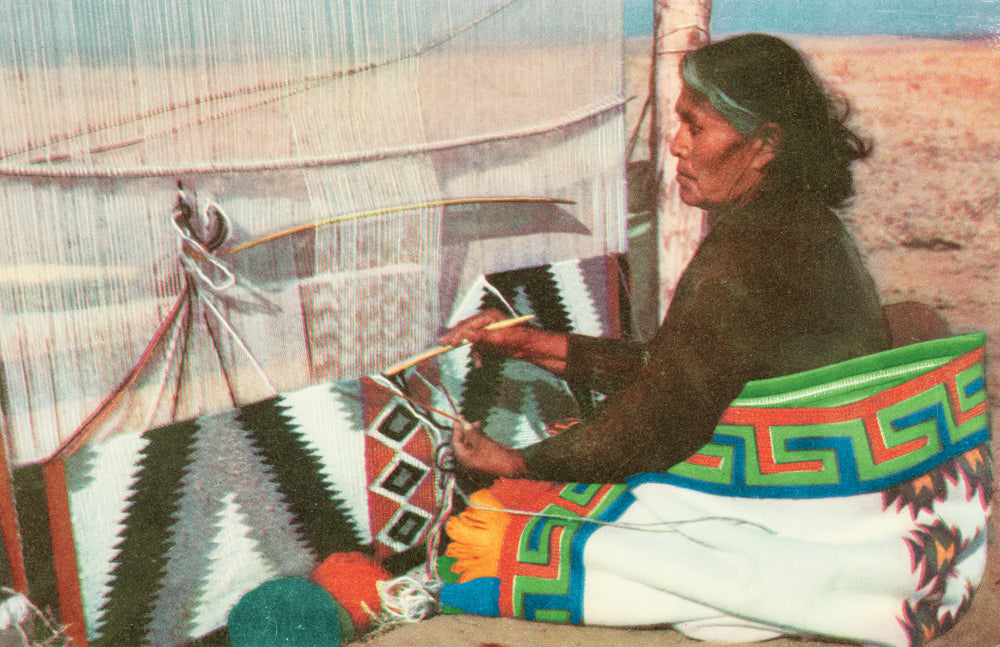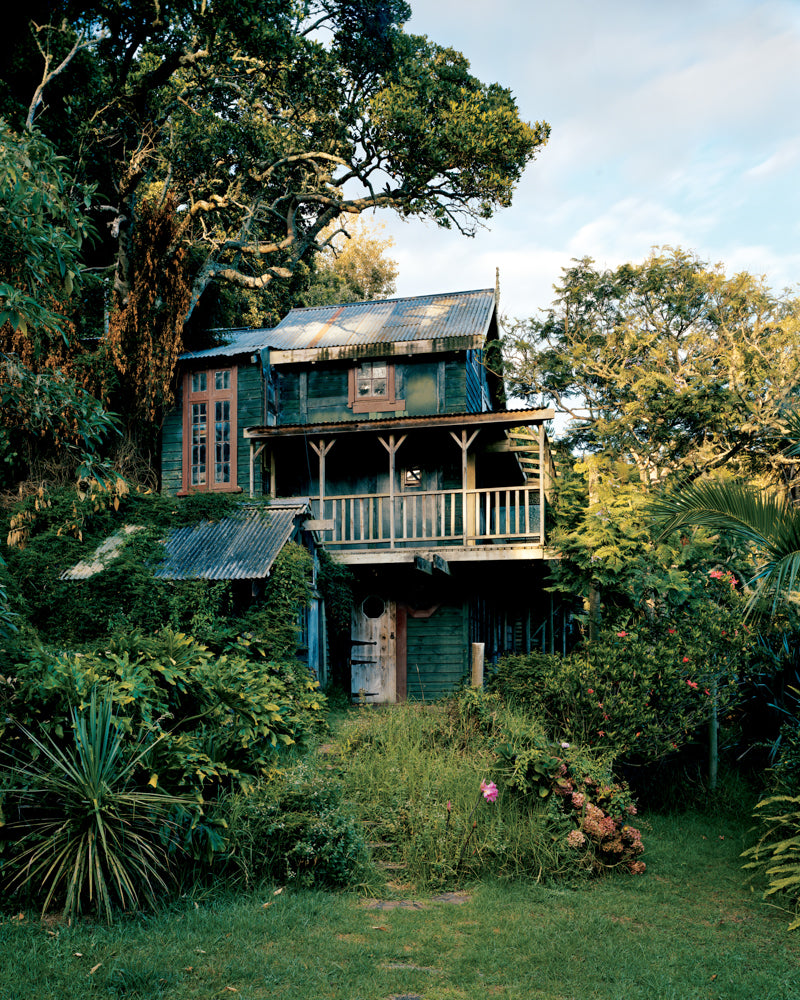
Navajo
NAVAJO

“I was struck by the idea of putting this very unique and precious thing in a place one might not imagine, in an effort to make even the most mundane of human practices a little more beautiful.”
There is a photograph taken inside one of the bathrooms at Ralph Lauren’s fantasy-like Double RL Ranch in Colorado, a photo that was published in a major American design magazine several years ago, a photo that spoke volumes to me for reasons I’ll try to explain.
When I saw it, I was putting together my first apartment in New York, and as any resourceful young man might be, I was scouring for inspiration. The picture — from the Elk Meadow Cabin, as it states — shows a clawfoot tub peeking out from behind a plaid shower curtain, an old shaker basket filled with colorful towels, and a striking Navajo rug.
Upon seeing it, I wanted to jump into this picture. I wanted to hop in the tub only to emerge from it, and press my wet feet into the seemingly soft confines of that rug and air dry in the mountain breeze I imagined would be flowing through an open window.
I wanted all of this. But I was struck most of all by the rug — by the idea of putting this very unique and precious thing in a place one might not imagine, in an effort to make even the most mundane of human practices (brushing one’s teeth, perhaps) a little more beautiful.

I’m told Navajos use the word “hózhó” to describe that same feeling of “walking in beauty” – of striving to create and maintain harmony and enjoyment in every day existence. “Hózhó,” as it was and is, infiltrates every part of the traditional Navajo way of life — everything is thoroughly considered, and that attitude is embodied in perhaps their greatest legacy, the impeccably crafted textiles that collectors chase down today — the ones that cover Mr. Lauren’s cabins. Those same ones that made me want to invest in something better than Bed Bath & Beyond.
It is said the Navajo may have learned the art of weaving from their Pueblo neighbors when they first settled in the Four Corners region (where Colorado, Arizona, New Mexico, and Utah meet) of the U.S. in anywhere from the 12th to the 14th century. And the first hundred years’ worth of textiles they produced were not rugs at all, they were clothes: sarapes (shawls), dresses, and they were saddle blankets that sat astride their horses.
They were produced by Navajo women on large handmade looms, and took months of continuous work to yield the finished product (depending, of course, on size). The designs ranged from simple, geometric shapes (like the “Crystal” one found next to the tub at Double RL), to elaborate figurines (like the “Yei” Rug rug pictured here). Many of these designs were defined and fleshed out much later, closer to the turn of the 20th century, but a brief search can yield the history of individual patterns and their respective histories.

The Navajo became very serious about weaving very quickly. By the end of the 17th century, they acquired (from Spanish settlers) and subsequently bred a unique sheep to produce long-staple yarn, known appropriately as the Najavo-Churro. And they dyed that yarn specifically for each piece, often accurately guessing the amount necessary for an entire blanket before beginning to weave.
When the Sante Fe Trail opened in 1822, more and more traders and settlers discovered Navajo weaving, but the textiles they produced were still mostly blankets. Thicker rugs came later, after 1880, when the railroad reached Navajo territory and demand grew further.


